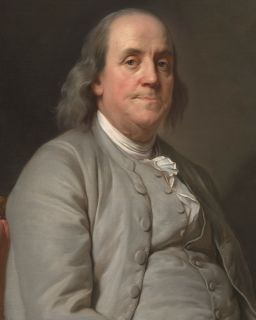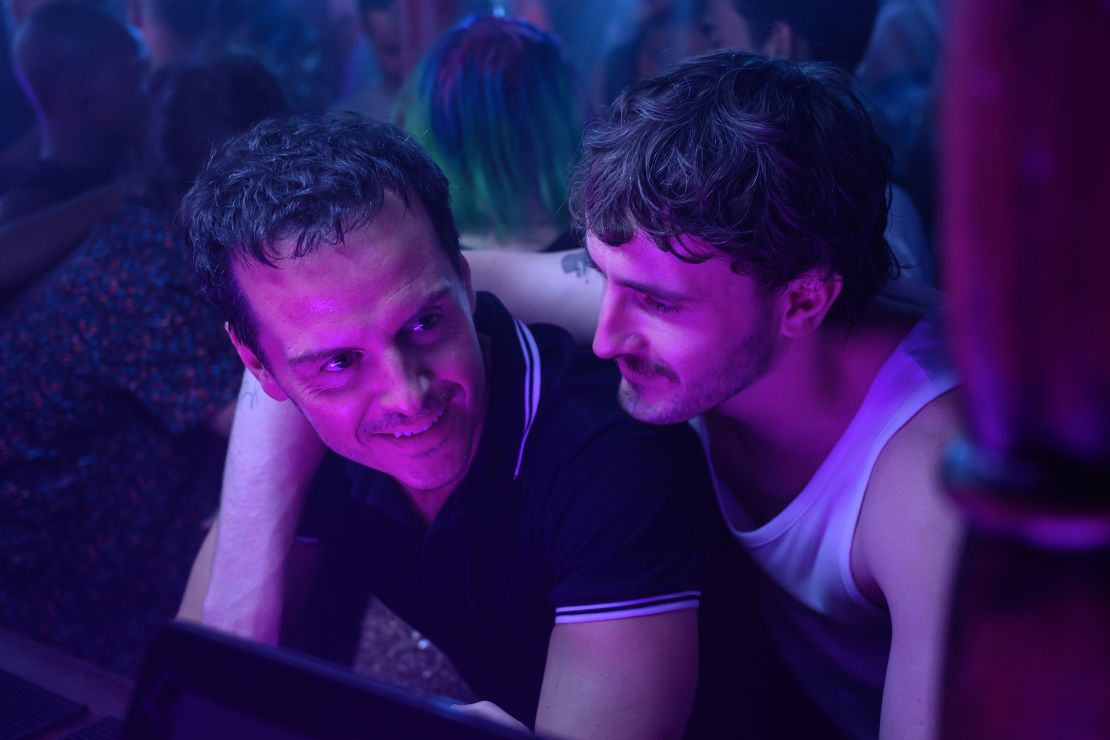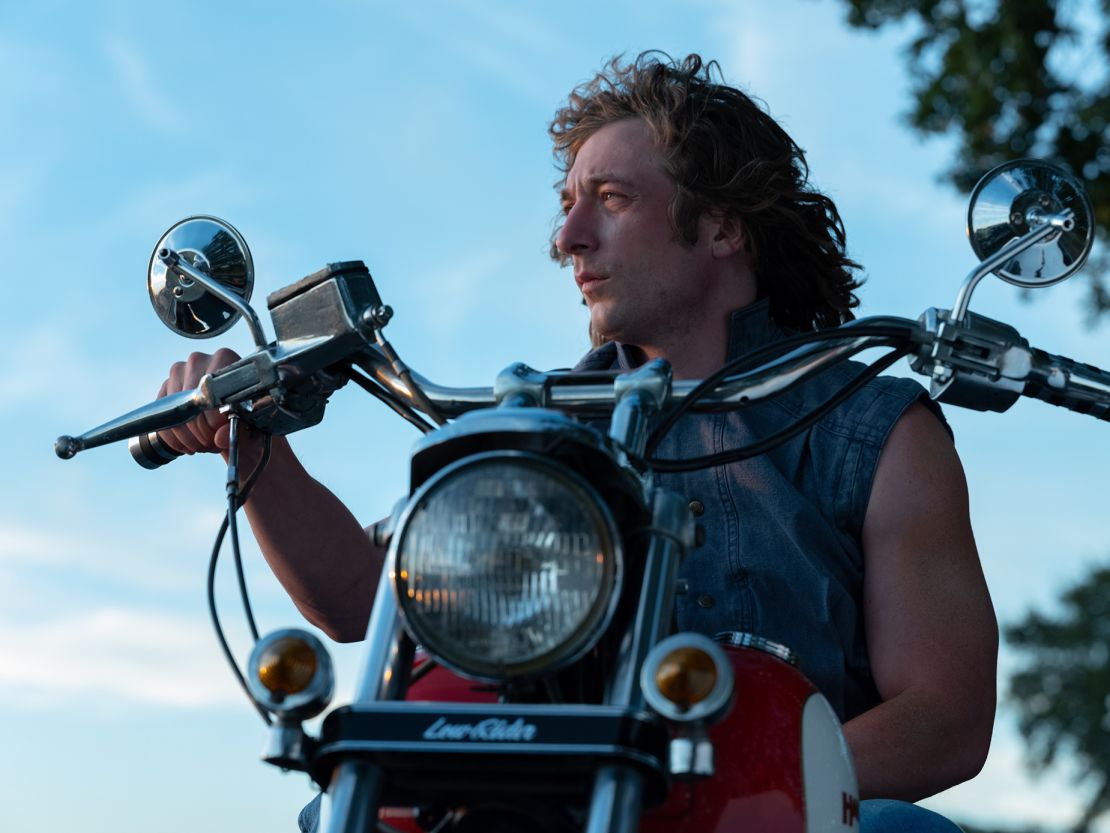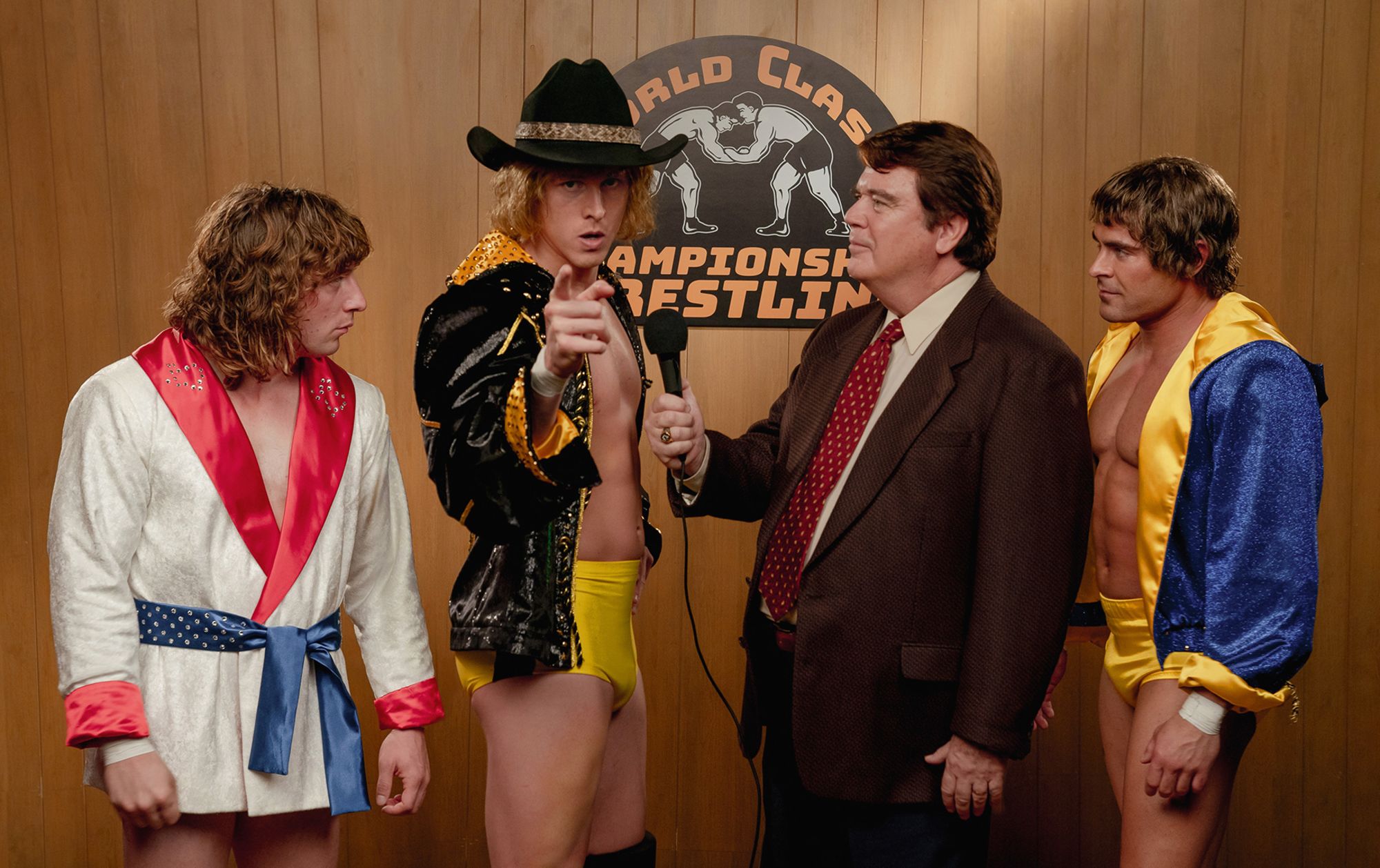At first glance, cinematic parallels between centuries-old French nobility and rough-and-tumble Texan wrestlers may seem few and far between.
But in addition to boasting flashy period wardrobes and strategic battle acumen, the Von Erich brothers in the ‘80s-set movie “The Iron Claw” and Napoleon Bonaparte’s revolutionary counterpart Paul Barras in Ridley Scott’s “Napoleon” share a stylistic similarity: They’re all coiffed in glorious variations of what we now colloquially refer to as the mullet.
“The same hair that these ’80s ‘wrestlemaniacs’ are wearing, it’s dead-on from a portrait in 1802,” said Jessica Glasscock, fashion historian and author of Wigging Out: Fake Hair That Made History.

Long renowned and reviled for its “business in the front, party in the back” reputation, the mullet is actually one of the most timeless and versatile haircuts. It’s having a big screen moment thanks not only to the aforementioned biopics but also to Paul Mescal’s character in the Golden Globe-nominated “All of Us Strangers” (and then there’s Kristen Stewart’s tousled mullet in the forthcoming queer thriller, “Love Lies Bleeding”).
In “The Iron Claw,” the distinctive mullets showcased by wrestling’s legendary Von Erichs — charismatic David (Harris Dickinson)’s fringed blond waves, Olympian Kerry (Jeremy Allen White)’s tumbling curls and by-the-book Kevin (Zac Efron)’s functional, choppy layers — weren’t just a fashion statement in the ring.
“They’re also working on the family farm,” the movie’s hair designer Natalie Shea Rose, who herself grew up in the Lone Star State surrounded by the divisive hairstyle, told CNN. The Von Erichs’ hairdos keep errant strands off a sweaty face, and shield the back of the neck from the sun. They express the practicality necessary for the brothers’ day-to-day life in rural Texas, as well as their personalities and ambitions, Rose added.
Long hair, don’t care
The “modern day” mullet largely originates from David Bowie’s genre-defining and gender-norm defying persona, Ziggy Stardust, Glasscock said. This counterculture sensibility also derives from the ‘70s punk movement, and was galvanized by British fashion designer Vivienne Westwood and her partner, music manager Malcolm McClaren.

More broadly, the mullet (a term commonly credited to the 1994 Beastie Boys banger, “Mullet Head”) dates much further back — perhaps as far as the 8th-century B.C., when similar styles were documented among both the Abantes tribe in Homer’s “The Iliad” and the nomadic Huns. The latter group’s shorn top locks were easily tucked under a protective helmet, while their long warrior tresses flowed from behind as they terrorized and plundered their way through the Roman Empire. Ancient Greek scholar Procopius described the Hunnic hair as “cut off in front back to the temples, leaving the part behind to hang down to a very great length in a senseless fashion.” In other words, befuddling to greater society, even in ancient times.
Bowie and his hairstylist, Suzi Ronson, “were trying to get away from the standard rocker shag: the long, hippie teen idol hair look” of the late 60s, Glasscock told CNN. They looked to a range of inspired references for inspiration, like a photo of a ginger-haired (female) model from a Kansai Yamamoto fashion show. “Bowie, especially, was so visually well-educated,” Glasscock added. “He was picking up a bricolage version” of the mullet, while also throwing in “17th and 18th century French dandy hair.”
“The mullet was typical of the sans-culottes, the French revolutionary man,” said “Napoleon” hair designer Francesco Pegoretti, referencing a term (literally “without breeches”) once used in France to describe the lower classes. Pegoretti took inspiration from a melange of sources — from historic portraits to contemporary fashion — to visualize Barras, a politician known for his pan-sexual dalliances and free-spending (if not corrupt) ways, and then styled the actor Tahar Rahim’s dark curls into a luxuriously defined, “very fancy” mullet.
At the turn of the 18th-century in France, mullets made a, well, revolutionary statement by rejecting the norms of the powder-wigged elite. “Wigs were fancy and expensive,” said Glasscock.

French radicals also took hair inspo from their American peers. “People from the Continental Congress wore what we would read as a full metal, 1992 mullet,” said Glasscock.
While campaigning for funding for the newly founded United States in 1778, Ambassador Benjamin Franklin proudly revealed his unwigged receding hairline and shoulder-length waves — now known as a “skullet” — to bolster his pro-freedom, anti-monarchy messaging.
“Natural hair is democratic, romantic and connected to the earth; the wig is aristocratic,” said Glasscock, adding, “The French loved Benjamin Franklin.”
Bad hair days
But the subversive, edgy-glamour of the Stardust-influenced mullet — which spawned the ‘dos of New Wave (see: Duran Duran; a regretful Bono) and hair metal (Mötley Crüe, Poison) — took a turn in the ‘80s and ‘90s. The hairstyle’s “shocking, weird and avant garde” associations became “cliché shorthand for ‘rebel,’” Glasscock explained. Sporting figures, and fans, took the mullet mainstream, she explained — name-checking New York Jets star quarterback Joe Namath for his aspirational tresses. (“Hockey hair” was, meanwhile, a popular synonym for mullet at the time, given its prominence among players and fans.)
Heading into the 21st century, the mullet had been dismissed by the creative classes. Instead, it had evolved, onscreen and in wider culture, into an over-the-top style “telegraphing these regressive, hypermasculine values,” Glasscock said. She pointed to stereotypical mullet-ed movie and TV characters like Nicolas Cage’s ex-army ranger in “Con Air” and David Spade’s trailer park-raised “Joe Dirt,” as well as the titular “Rambo,” those “Natural Born Killers” and any number of characters in Netflix’s “Stranger Things” series, to name just a few.
But, despite being historically accurate in “The Iron Claw,” the Von Erich mullets actually help subvert that trope. The big-haired, short-shorts-celebrating film is, at its heart, a tragic family story and cautionary tale of pervasive toxic masculinity.

In “All of Us Strangers,” the mysterious Harry (Paul Mescal) — with a hint of mullet, soft wisps peeking out at the bottom of lush textured curls — exhibits vulnerability from the get-go. Conceding loneliness, he knocks on the door of his neighbor, the creatively-frustrated screenwriter Adam (Andrew Scott), only to be turned away.
As the two connect, Harry’s retro cut feeds into the movie’s narrative ambiguity. The plot sees Adam seemingly encountering the ghosts of his parents, who had died in the 1980s, to answer long-lingering questions still haunting him in the present. “Is Harry part of the ‘80 story, or is he part of the present day?” said the film’s hair and makeup designer, Zoe Clare Brown, who trimmed Mescal’s “very neutral, scruffy hairstyle” every two-weeks.
Even prior to filming “All of Us Strangers,” Mescal was sporting a burgeoning “micro-mullet,” as dubbed by the press. And in the weeks after production wrapped, Mescal broke the internet, again, by debuting a more decisive mullet — and ‘80s-esque mustache — at the 2023 Met Gala. “On the last day of shooting, (Mescal) said to us, ‘Okay, can you cut it into more of a mullet?’” recalled Brown, who had avoided a “pronounced” look to maintain the director’s vision for the film.
(She didn’t receive clearance to do so at the time, so Mescal visited his own stylist for the event.)

While playing Kerry Von Erich in “The Iron Claw,” White also wore his dynamic, sweeping mullet off-set — but not entirely by choice. Using a keratin bonding technique, Rose hand-blended three colors of hair extensions, which last for six to eight weeks, into “The Bear” star’s real curls. “I know it made it harder for (White) because he was the only person that had to go home in his look,” Rose recalled with a giggle. “I was like, ‘I’m sorry, here’s a ponytail holder.”
But that dedication may have played an integral part in a mullet revival kicking off 2024. According to Rose, White’s lush locks have become a hot request in salons in the US. “My friend was texting me, ‘Dude, I just did three mullets today and it’s such a fun cut,” she added.
As such, the hairstyle’s on-screen portrayals also portend a bright, future for the time-honored, establishment-bucking haircut, said Brown, predicting a growing interest in textured mullets for all genders.
Glasscock agreed: “There’s always going to be people who want a rebel style, and can just reach into this toolkit — this visual language — the same way that Bowie did.”



